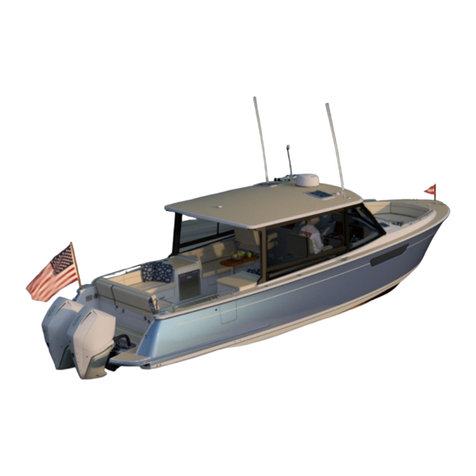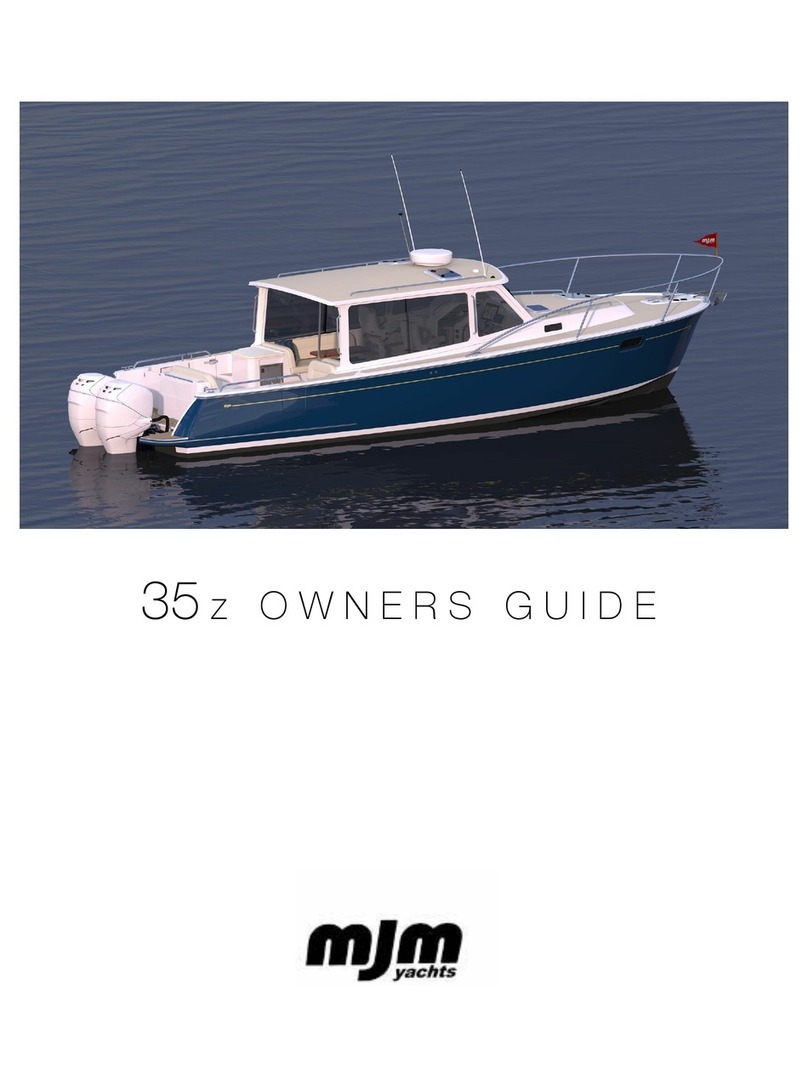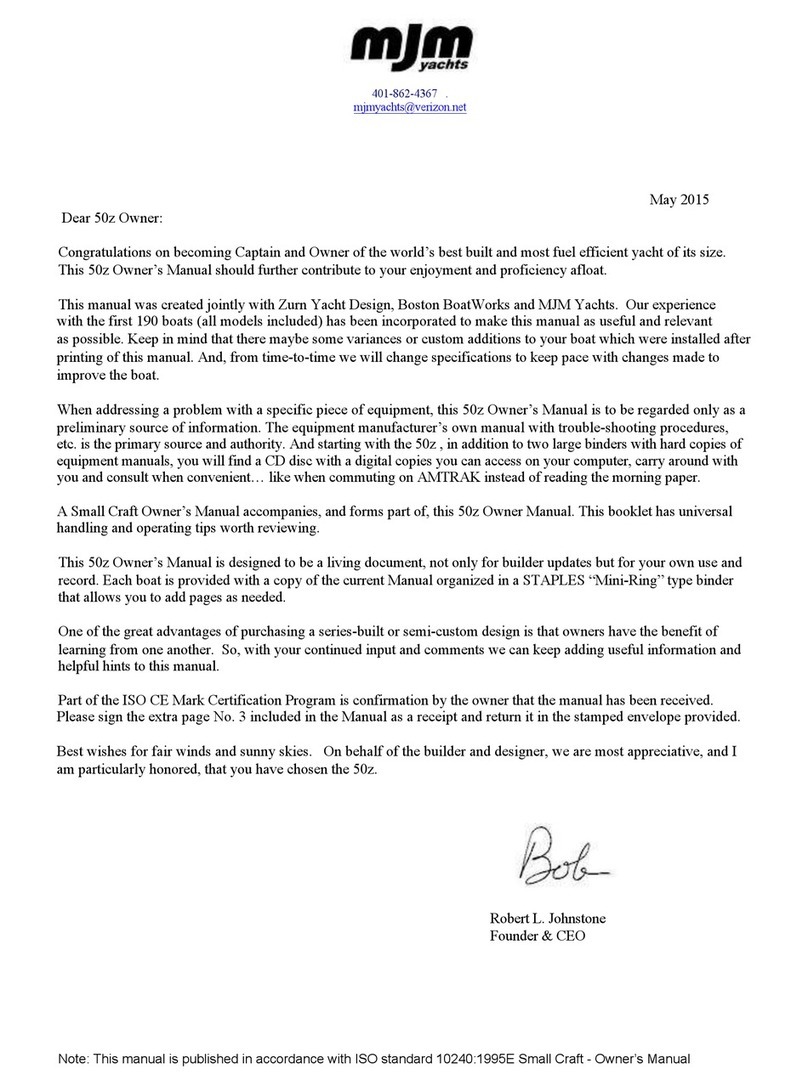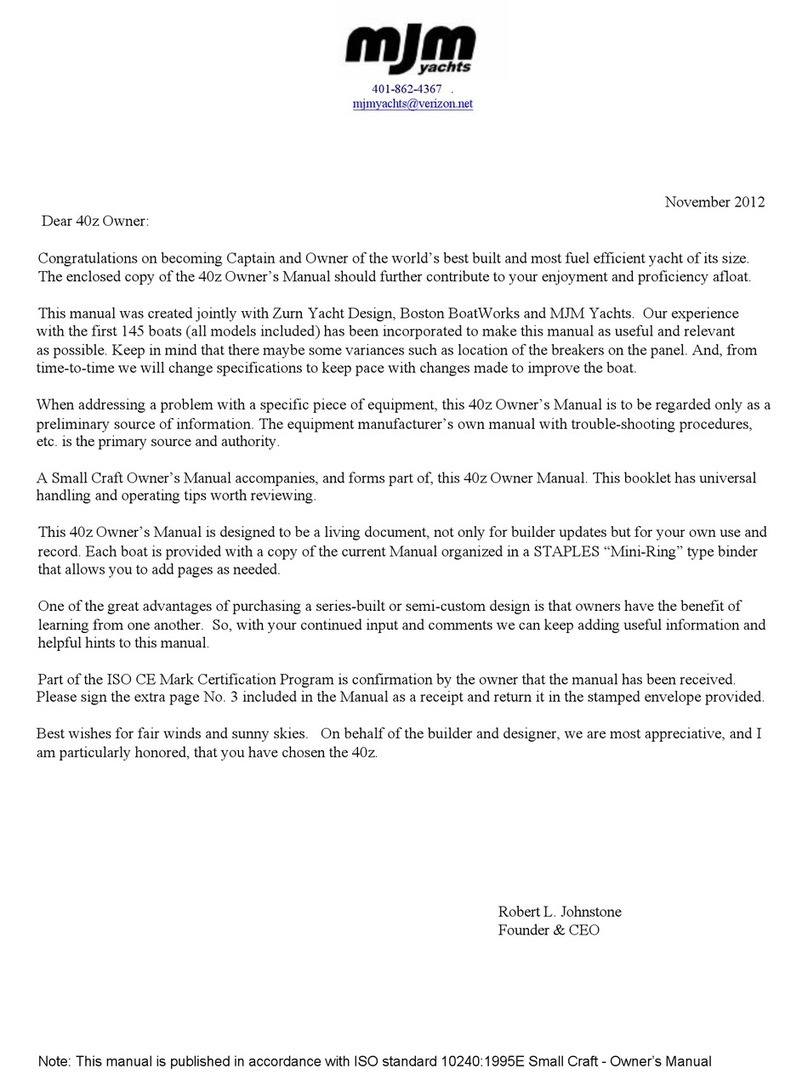INTRO -THE TOP 9 CAUSES OF DIESEL ENGINE FAILURE (Motorboating Magazine - 2006).
1. NO FUEL: This is probably less of a problem on a fuel-efficient MJM than on other boats, but don’t
think that it will never run out! Lack of owner attention to fuel consumption is the primary culprit for engine
failure. A boat’s fuel tank can be nearly dry as a bone –even when the guage claims there’s a 1/8th of a
tank left. Remember that at cruising speed, the gauge shows the tanksreading more than when the boat
is at rest. A good rule of thumb is to never pass a fuel dock if your gauge is showing under 1/3 full.
1b. AIR IN FUEL LINE: If air gets drawn into the fuel lines because of either a small leak in a fuel line
connection or the Racor Filter lid gasket/filter basket tabs have interfered with the lid being secured fully,
you may find the engine will turn over, but won’t start. Check the Racor to insure the fuel level is within
an inch of the top. Check the Volvo owner manual for the location of a manual primer pump.
2. DIRTY FUEL: Engine problems are caused by dirt and water in the fuel. Debris, stirred up from the
bottom of the tank by wave action, is drawn into the fuel line and clogs the fuel filter element. Starved for
fuel, the engine begins to run poorly, and then not at all. Moisture condenses out of the highly humid air
on the inside walls of a fuel tank, then runs down into the fuel. Water can also be introduced at the fuel
dock from a contaminated fuel supply. Fuel floats on top of water and the fuel pick ups are near the
bottom of the tank. A fuel/water separator protects against this by handily extracting the water. Check
the bowl daily and drain off the accumulated water. For severe contamination, use a fuel drying additive.
3. FUEL BUGS: Diesel engines suffer from microbial bugs growing in the fuel. If left unchecked, these
critters clog filters. If you leave the same diesel fuel in the tank for any length of time, a fuel conditioner
similar to that supplied with your boat by the builder will kill the bugs and break up any hydrocarbon
residue into particles that will burn completely in the combustion process.
4. TIRED PUMP: As boats age, a worn-out circulating water pump is another engine killer. Impeller
blades are commonly made of nitrile that stiffens over time and can break off entirely, reducing coolant
flow. Periodic engine maintenance procedures can prevent this problem. A spare is provided in the
Yanmar Spares Kit.
5. HARD HOSE: As water intake hoses age, they lose their resiliency and collapse under suction,
causing a restriction in the flow of engine coolant. This results in over-heating. Prevention is easy:
Visually inspect cooling hoses and squeeze them to be sure they retain shape and set.
6. CLOGGED INTAKE: Floating debris in the water is another culprit. Things like discarded plastic
baggies, weeds, etc. can plug up the raw-water intake. You can avoid this problem by visually inspecting
the strainer basket. When removing debris, be sure to properly replace the seal, otherwise the pump will
either lose suction or spray salt water onto the air intake, depending on the strainer location. Smearing
the seal with Vaseline or other marine-grade grease helps and firmly securing the top is important.
7. HARD KNOCKS: Collision with an underwater obstacle that damages the propulsion system. Often
you can still operate the boat at low RPM to return to port, being careful to avoid excessive vibration that
might otherwise compound the damage by damaging the transmission. The problem may be corrected in
a day or so without hauling by an experienced diver who has access to a prop shop where the blades can
be repaired and the prop re-balanced, then re-installed.
8. BAD BATTERY: Marine starting batteries die from old age and neglect. Keep the terminals and
posts clean from that green corrosion that builds up, restricting the flow of current –preventing the cless
from fully charging. Periodically have your batteries tested to determine their condition and expected
longevity. The 36z is equipped with a “parallel” switch which can be turned on to employ the 400
ampere-hour house bank in starting the engine.
9. SAGGING BELT: As V-belts wear, they stretch and begin to slip. Consequently, alternators and
water pumps don’t spin to their full speed. Batteries may not fully charge and coolant circulates
sluggishly. The solution is to check belt tension regularly and tighten belts when necessary. Drive belts

































